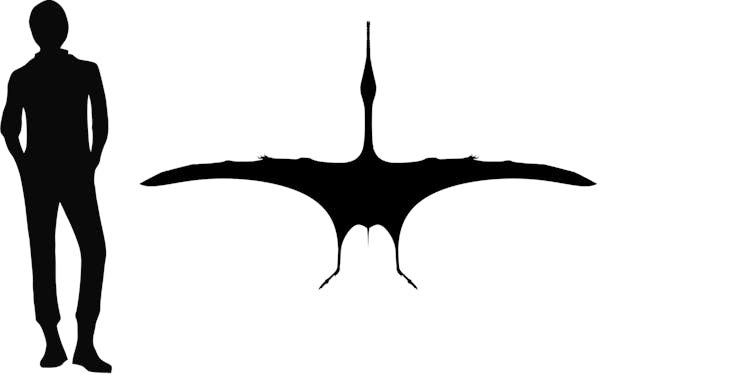


This pterosaur was all over popular books as the filter-feeding flamingo mimic, but there’s more to it than just a stock character trope. It is among the very first pterosaur discovered in South America, and it hails from the Lagarcito Formation in San Luis Province in Patagonia, Argentina.
The formation dates back to the Albian Stage of the Early Cretaceous, about 105 million years ago. Fossils were also found in Chile, from the Santa Ana Formation of the same age.
The name was given by famous Argentine paleontologist José Bonaparte, to a holotype thigh in 1969. The only species in the genus is Pterodaustro guiñazui. It is a small ctenochasmatid with a wingspan of 2.5 meters, rather smallish for a Cretaceous pterosaur.
The skulls showed the animal’s true nature, with the sift-feeding apparatus of its relatives having been taken to the absolute extreme. The upper jaw teeth were small and rounded crushers. Its lower jaw teeth were just 0.3 millimeters across and 3 centimeters long.
They were shaped like bristles and its skull itself, around 29 centimeters long, had curved jaws. There’s no doubt that it wasn’t a filter feeder, probably eating algae and tiny crustaceans just like waterfowl.
Eggs have been found as recently as 2014, and from studies of the scleral rings in its eyes we know it was nocturnal. We also know that it grew at a massive rate, reaching half its adult size in under one to two years and then continuing to grow for the next four to five years.
